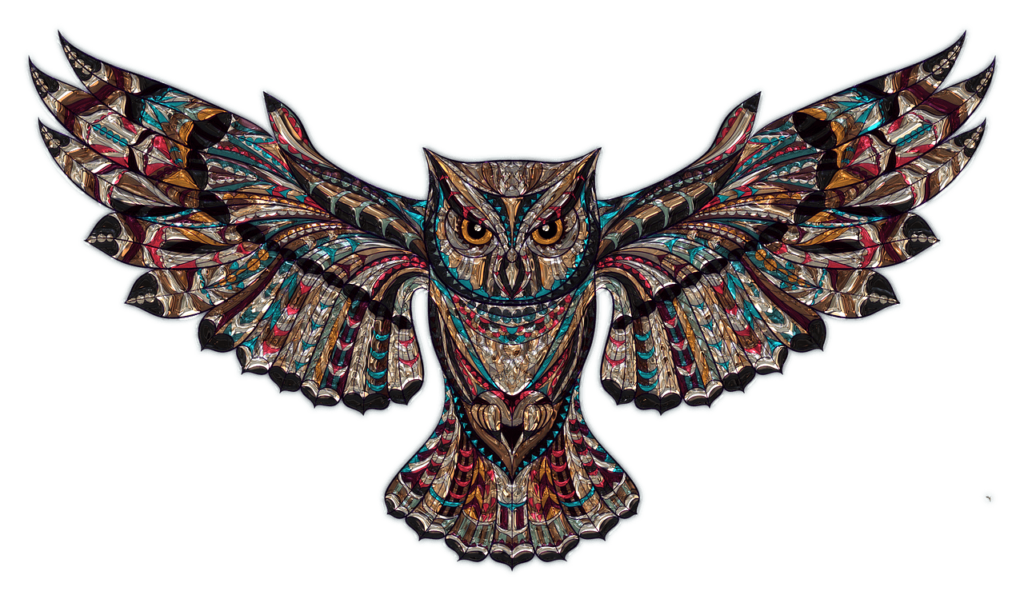Have you ever wondered how much weight those stunning metal mountain wall art pieces can bear? Well, in this article, we will explore the maximum weight capacity of these decorative masterpieces. Discover the strength and durability of metal mountain wall art and uncover the answers to all your weight-related questions. Whether you’re considering hanging a heavy mirror or a set of shelves on your metal mountain art, this article will provide you with the essential information you need to ensure your artwork remains secure and stylish. So, let’s delve into the world of metal mountain wall art and find out just how much weight these captivating creations can withstand.

Materials used in metal mountain wall art
Metal mountain wall art is typically crafted using various types of metals, which contribute to its structural integrity and overall weight capacity. Common metals used in creating these artworks include steel, aluminum, and copper. Each metal type has its own unique characteristics that affect its strength, durability, and weight. Steel, known for its unparalleled strength, is often preferred for wall art projects where weight capacity is a primary concern. Aluminum, on the other hand, is lightweight yet sturdy, making it an excellent choice for larger wall art installations. Copper, prized for its rich color and natural patina, adds an artistic touch to metal mountain wall art while still offering adequate strength.
Supporting structure
In addition to the type of metal used, the supporting structure of metal mountain wall art plays a crucial role in determining its weight capacity. A well-designed supporting structure provides the necessary framework to distribute the weight evenly and effectively withstand potential stress or pressure. This usually includes a sturdy backing plate or frame, which acts as the backbone of the artwork, and metal brackets or bars that help distribute the weight throughout the piece. The supporting structure is carefully integrated into the design to ensure both aesthetic appeal and functional stability.
Additional reinforcements
To enhance the weight capacity of metal mountain wall art, additional reinforcements may be implemented. These reinforcements can include extra bracing, especially for larger or more intricate designs, to provide added strength and stability. Welded joints are another common method of reinforcement, ensuring the various metal components are securely joined together. Reinforcements are strategically placed based on the artwork’s design and structural requirements, contributing to the overall weight capacity and durability of the piece.
Factors influencing weight capacity
Several factors influence the weight capacity of metal mountain wall art, all of which must be carefully considered during the design and construction process. These factors include the thickness of the metal, the quality of the welds, the dimensions and surface area of the artwork, and the type and arrangement of the mounting hardware.
Thickness of metal
Thicker metal generally offers higher weight capacity due to its increased strength. However, it is essential to strike a balance between thickness and weight, as excessively thick metal may make the artwork unnecessarily heavy and difficult to mount.
Quality of welds
The quality of welds used in the construction of metal mountain wall art significantly impacts its weight capacity. Strong, well-executed welds ensure the different metal components are securely fused together, preventing any weak points that could compromise the artwork’s structural integrity.
Dimensions and surface area
The overall dimensions and surface area of the artwork can affect its weight capacity. Larger wall art pieces, especially those with intricate designs, may require additional reinforcements to support their weight effectively. Similarly, the overall surface area of the artwork will have an impact on the weight it can safely bear.
Type and arrangement of mounting hardware
The type and arrangement of the mounting hardware utilized can also influence the weight capacity of metal mountain wall art. High-quality, robust mounting hardware that is appropriately spaced and secured to the supporting structure ensures the artwork is properly anchored to the wall and can handle its designated weight capacity.

Testing methods for weight capacity
To ensure the weight capacity of metal mountain wall art, various testing methods are employed during its design and creation. These testing methods include static weight testing, dynamic weight testing, and stress analysis and simulations.
Static weight testing
Static weight testing involves placing a predetermined weight on the artwork for an extended period. This test helps determine how well the artwork can support a fixed load without any movement or deformation. By examining the response of the artwork under static conditions, designers and manufacturers can assess its weight capacity and make any necessary adjustments to ensure its durability and safety.
Dynamic weight testing
Dynamic weight testing involves subjecting the artwork to varying weights and movements to simulate real-life conditions. This test helps evaluate the artwork’s ability to withstand dynamic loads, such as vibrations or accidental bumps. By replicating these scenarios, designers can identify any potential weaknesses and implement appropriate modifications to increase weight capacity and prevent damage.
Stress analysis and simulations
Stress analysis and simulations use engineering software to assess the structural integrity of metal mountain wall art. This method involves creating a digital model of the artwork and subjecting it to simulated stress tests and simulations. By analyzing the data obtained from these tests, designers can predict how the artwork will perform under different weight loads, identify potential weak points, and make necessary modifications to ensure optimal weight capacity.
Typical weight capacity range
The weight capacity of metal mountain wall art can vary depending on various factors, including the specific design, materials used, and manufacturing techniques. However, there are typically three weight capacity ranges: minimal, average, and maximum.
Minimal weight capacity
The minimal weight capacity refers to the least amount of weight that the artwork can safely support without risking damage or compromising its overall integrity. This range constitutes the lowest end of the weight capacity spectrum and is generally determined based on structural calculations and safety considerations.
Average weight capacity
The average weight capacity represents the typical load that metal mountain wall art is designed to support. This range provides a reliable guideline for estimating the weight that the artwork can comfortably bear over an extended period. It takes into account the specific design, materials, and construction techniques employed during the manufacturing process.
Maximum weight capacity
The maximum weight capacity denotes the upper limit of weight that the artwork can withstand without incurring damage or posing safety risks. It represents the highest load the artwork can safely carry, taking into account factors such as design strength, structural reinforcements, and mounting hardware.

Determining weight capacity for specific wall art
When it comes to determining the weight capacity of metal mountain wall art for a specific installation, several considerations must be taken into account. These include the manufacturer’s guidelines, professional consultation, weight distribution considerations, and structural integrity assessment.
Manufacturer’s guidelines
The manufacturer’s guidelines provide valuable insights into the weight capacity of metal mountain wall art. These guidelines typically outline the maximum weight the artwork can support based on the specific design, materials used, and mounting hardware provided.
Professional consultation
In cases where the weight capacity requirements are unique or exceed the manufacturer’s guidelines, consultation with a professional is recommended. Structural engineers or experienced installation experts can assess the specific installation scenario, consider various factors, and provide expert advice on weight limitations and any necessary modifications or additional reinforcements.
Weight distribution considerations
Weight distribution is a crucial factor to consider when determining the weight capacity of metal mountain wall art. Evenly distributing the weight across the artwork helps prevent undue stress on specific areas, ensuring the overall stability and integrity of the piece. Uneven weight distribution can lead to structural weaknesses or deformation, compromising the aesthetic appeal and safety of the artwork.
Structural integrity assessment
A comprehensive assessment of the structural integrity of metal mountain wall art is vital in determining its weight capacity. This evaluation involves examining the supporting structure, weld quality, and overall construction to identify any potential weak points or areas of concern. By addressing any structural issues, the weight capacity of the artwork can be enhanced, ensuring its safety and longevity.
Effects of weight capacity exceeded
Exceeding the weight capacity of metal mountain wall art can have detrimental effects on both the artwork itself and the wall it is mounted on. It can also pose safety hazards to those in the vicinity.
Artwork damage
When the weight capacity of metal mountain wall art is exceeded, it may lead to structural failure, deformation, or even breakage of the artwork. Excessive weight places undue stress on the metal components, potentially causing warping, bending, or separation of welded joints. Additionally, the artwork may lose its intended shape, compromising its aesthetic appeal and overall value.
Wall damage
Excessive weight can also lead to damage to the wall on which the metal mountain wall art is mounted. The mounting hardware may become loose or detached, causing the artwork to fall from the wall. This can result in scratches, dents, or even holes in the wall surface. The weight of the falling artwork can also cause damage to the surrounding area.
Safety hazards
When the weight capacity of metal mountain wall art is exceeded, safety hazards arise. The artwork may become unstable, increasing the risk of it falling and potentially causing harm to individuals nearby. Additionally, the excessive weight can strain the supporting structure and mounting hardware, compromising their integrity and creating an unsafe environment.
Factors to consider before purchasing
Before purchasing metal mountain wall art, several important factors should be considered to ensure a successful installation and optimal weight capacity.
Intended location
Consider the intended location of the artwork before making a purchase. Different areas may have varying weight limitations based on the wall material, stud location, or overall structural support. Knowing the weight capacity requirements of your chosen area can help you select a suitable piece of metal mountain wall art.
Placement on the wall
Consider how the artwork will be placed on the wall. Artists and manufacturers usually provide specific instructions regarding the orientation and position of the artwork. Following these guidelines ensures that the weight is evenly distributed and the artwork is mounted securely, thereby maximizing weight capacity and minimizing any potential risks.
Weight of the artwork
Consider the weight of the metal mountain wall art itself. It is important to evaluate whether the weight is within the capacity of the intended location and mounting hardware. If the weight exceeds the limits, professional consultation or alternative display options may be necessary to ensure a secure and successful installation.
Installation tips for metal mountain wall art
Proper installation techniques are crucial for maximizing weight capacity and ensuring the longevity of metal mountain wall art. The following tips can guide you in achieving a successful installation:
Proper wall preparation
Ensure that the wall surface is clean, smooth, and free from any debris before mounting the artwork. This includes removing any existing hardware or fixtures that may interfere with the installation process. Proper wall preparation provides a secure foundation for the mounting hardware, preventing any potential damage or failures.
Secure mounting hardware
Use high-quality, appropriate mounting hardware that is specifically designed for the weight capacity requirements of the metal mountain wall art. This may include heavy-duty screws, wall anchors, or brackets. Ensure that the hardware is properly secured to the wall and the supporting structure of the artwork, distributing the weight evenly and effectively.
Professional installation recommendation
For larger or more intricate metal mountain wall art installations, professional installation is often recommended. Experienced installers have the expertise and knowledge to assess the specific requirements of the artwork and ensure proper mounting. Professional installation minimizes the risk of damage, improves weight capacity, and provides peace of mind.
Alternative display options for heavier wall art
For metal mountain wall art that exceeds the weight capacity of traditional wall mounting methods, alternative display options can be considered. These options provide secure and visually appealing alternatives for showcasing heavier artworks.
Pedestal or freestanding display
Using pedestals or freestanding displays allows for the weight of the artwork to be supported directly by the floor. This eliminates concerns about wall weight capacity and provides a stable foundation for heavier pieces. Pedestals can be custom-designed to complement the artwork and enhance its overall aesthetic appeal while maintaining its structural integrity.
Overhead ceiling suspension
Another alternative for heavier metal mountain wall art is overhead ceiling suspension. This method involves suspending the artwork from the ceiling using cables or other secure attachments. Ceiling suspension distributes the weight of the artwork across multiple points, reducing the strain on any single area. It also provides an opportunity to create unique hanging arrangements for a visually captivating display.
Additional safety measures
To ensure the ongoing safety and longevity of metal mountain wall art, several additional safety measures should be considered.
Periodic inspection
Regularly inspect the artwork and its mounting hardware to identify any signs of wear, damage, or degradation. This includes checking for loose screws, weakened welds, or any changes in the wall or supporting structure that may affect weight capacity. Periodic inspections help identify potential issues before they escalate, allowing for prompt corrective action.
Avoiding excessive stress on the artwork
To prevent exceeding the weight capacity, avoid placing excessive stress on the metal mountain wall art. This includes refraining from leaning or placing heavy objects directly on the artwork, as well as avoiding hanging items on or near the artwork that could exert unnecessary additional weight. By treating the artwork with care, you can maintain its weight capacity and safeguard its structural integrity.
Avoiding placing heavy objects on the artwork
As a precautionary measure, avoid placing heavy objects on top of the metal mountain wall art. Even if the artwork has sufficient weight capacity to support its intended load, placing additional weight on top of it can compromise its stability and increase the risk of damage. Respect the integrity of the artwork and use alternative surfaces or display options for heavier objects.
In conclusion, the weight capacity of metal mountain wall art is influenced by various factors, including the materials used, supporting structure, reinforcements, and mounting hardware. Proper weight capacity determination is essential to ensure the artwork’s structural integrity and safety. By considering factors such as intended location, placement, and weight distribution, you can select and install metal mountain wall art that maximizes its weight capacity, enhances its longevity, and provides an aesthetically pleasing addition to your space. Remember to always follow manufacturer’s guidelines, seek professional advice when necessary, and take proper precautions to prevent damage, preserve the artwork, and maintain a safe environment.
